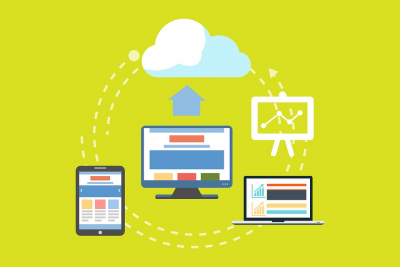
Azure provides several services to help companies easily migrate to the cloud. This article offers a review of key tips and tools you can use to ensure a successful migration to Azure.
What to Consider Before Migrating your Data to Azure
Before you start migrating your data it is important to carefully plan your migration. You should take into account factors such as the compatibility with the target platform and compliance requirements. The following tips can help you create a solid migration strategy.
Assess Cloud Readiness
Cloud readiness is the measure of the compatibility of the data and applications you want to migrate to the cloud. To assess this you should consider the following factors.
Data types
You should consider the type of data you want to migrate to Azure since it determines the type of storage required. Azure offers a number of data storage services for both structured and unstructured data. In addition, it is important to clean the data from duplicated or misconfigured records to avoid affecting data integrity.
Security and Compliance
Cloud providers have security measures in place to ensure compliance with security regulations. However, it is important to confirm your application meets compliance regulations according to your industry requirements.
Most cloud providers work on a shared responsibility basis. The cloud vendor takes responsibility for securing the infrastructure environment while the customer takes responsibility for securing the access to its cloud. Some of the measures customers take may include identity management, access control, and authentication.
Plan Your Migration
You can migrate applications to the cloud by using one of the following strategies:
- Lift and shift—the application is migrated to the cloud without changes
- Refactoring—performing small changes to modify the application to the cloud
- Re-architecting—restructuring the entire application to align with the cloud. In this case, Azure features such as the Azure App Services can help you build and deploy the application.
When migrating data to the cloud, there are many ways to build a data migration strategy. The final migration plan will depend on the organization’s needs and requirements.
Here are popular strategies for transferring data to the cloud:
- Big bang migration—the transfer is completed within a set time frame. The downside of this method is that it requires downtime while the data is transferred. The upside is that the transfer can be completed in a relatively short time.
- Trickle migration—this method involves completing the migration process in phases. There is no downtime since the old system and the new run in parallel.
Backup Your Data
Once you have your detailed migration plan in place, it is time to backup all data. This can prevent data loss in case something goes wrong during the migration. It is important to test the backup is viable before proceeding with the migration.
Test Your Data Migration Plan
Tst the migration plan with a small representative section of the data before proceeding with the migration. Testing can help spot issues that can arise during transfer. You can test with low-priority data to prevent critical data loss issues.
You should also test during implementation to ensure everything is going smoothly. For example, if you’re creating a hybrid environment, you can test the connectivity between Azure regions and the on-premises system.
A pilot test can also help users familiarize themselves with the new system on a controlled scale. You can configure a demo environment consisting of a web server, an application server, and a database instance. Then you can test effectively how the migration will go.
Migrate to Azure
At this point, you start migrating your data to Azure. The type of migration will depend on the strategy you choose. Depending on the type of migration you can use automation tools, templates and processes to minimize manual effort.
You can migrate structured data to any of the database offerings in Azure. For example, structured data can be migrated to Azure SQL Database or SQL Server on Virtual Machines. Azure also offers solutions for PostgreSQL and MySQL databases.
Migrating unstructured data involves choosing a data storage service within an Azure storage account. Azure offers different types of data storage services for different use cases. For example, Azure Blob Storage is designed to store large amounts of unstructured data. Azure File Storage enables you to create a file share in the cloud.
5 Azure tools for Cloud Migration and Management
Once your data is on Azure, you can leverage Azure tools and services to make it easier to manage the data in the cloud.
1. Azure Storage Explorer
Azure Storage Explorer enables you to manage your Azure storage accounts by using a client-side application. This application runs on Windows, Mac, and Linux. To migrate data with Azure Storage Explorer, you copy and paste files into a standard file system manager. While this tool works well with small amounts of data, it can be time-consuming when transferring large datasets.
2. AzCopy
This command-line utility is designed to help users copy data from external sources to Azure storage. You can also use AzCopy to copy data from one Azure storage account to another or to another Azure subscription. AzCopy runs on Windows and Linux.
3. Azure PowerShell
It is a command-line scripting language that helps you interact with the Azure Resource Manager using a task-based interactive shell. Azure PowerShell enables you to transfer data between Azure storage accounts.
4. Azure CLI
This command-line scripting language works similar to Azure PowerShell, but adds the capabilities for Mac. To use Azure CLI you need to know the commands and syntax required to execute tasks on Azure services. You can use Azure CLI to migrate data by scripting the migration process.
5. Microsoft Data Migration Assistant
When you want to migrate SQL databases to Azure SQL you can use the Microsoft Data Migration Assistant. This tool helps you evaluate the compatibility of the source and target databases.
Using the Data Migration Assistant, however, does not reduce the time involved in copying the actual data. When migrating extremely large datasets, you can ship physical disks to Microsoft, and Azure personnel will handle the upload manually.
Wrap Up
Migrating data to Azure may seem like a difficult task but with careful planning and execution, the process can go smoothly and without data loss. You should take into account the type of data you want to migrate and choose the appropriate Azure storage. Leveraging the tools mentioned in this article can help you make the transition easier.
Author Bio

Gilad David Maayan is a technology writer who has worked with over 150 technology companies including SAP, Samsung NEXT, NetApp and Imperva, producing technical and thought leadership content that elucidates technical solutions for developers and IT leadership.
LinkedIn: https://www.linkedin.com/in/giladdavidmaayan/


